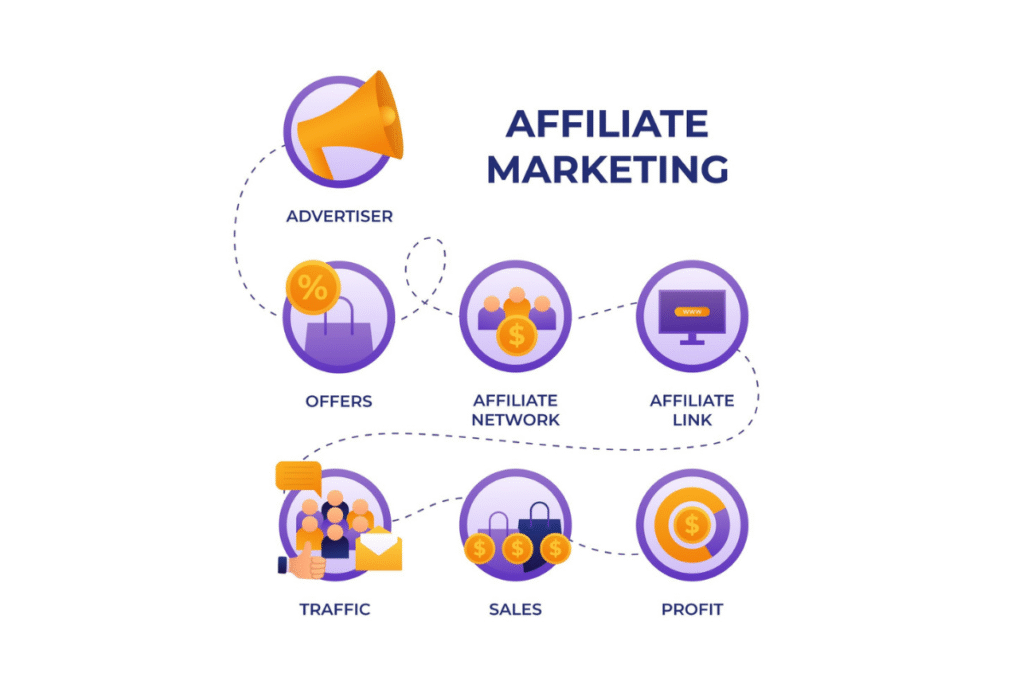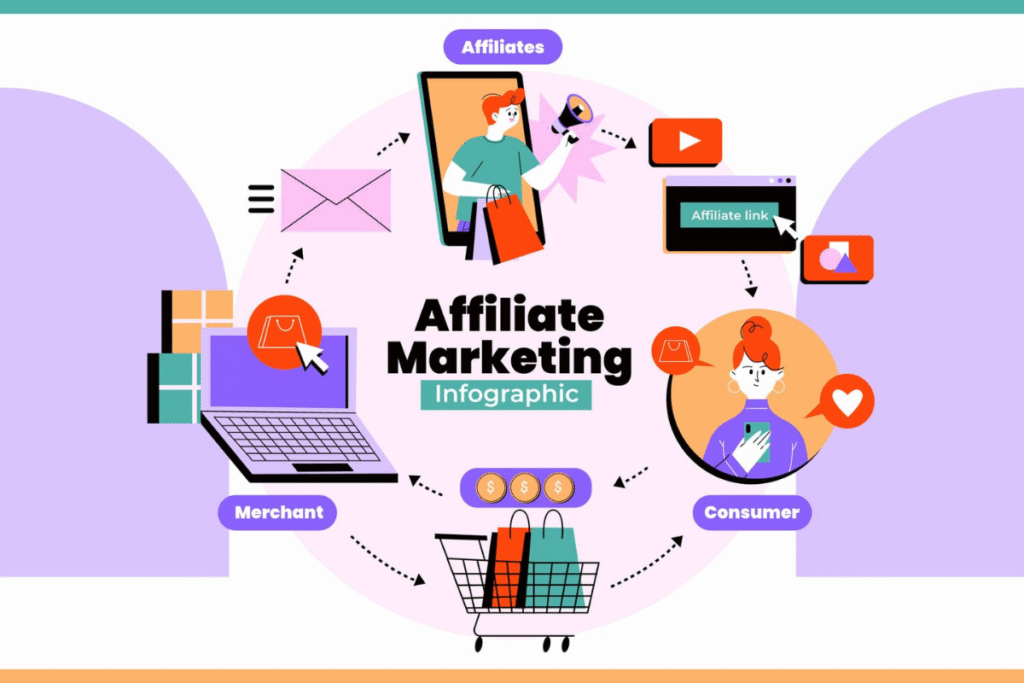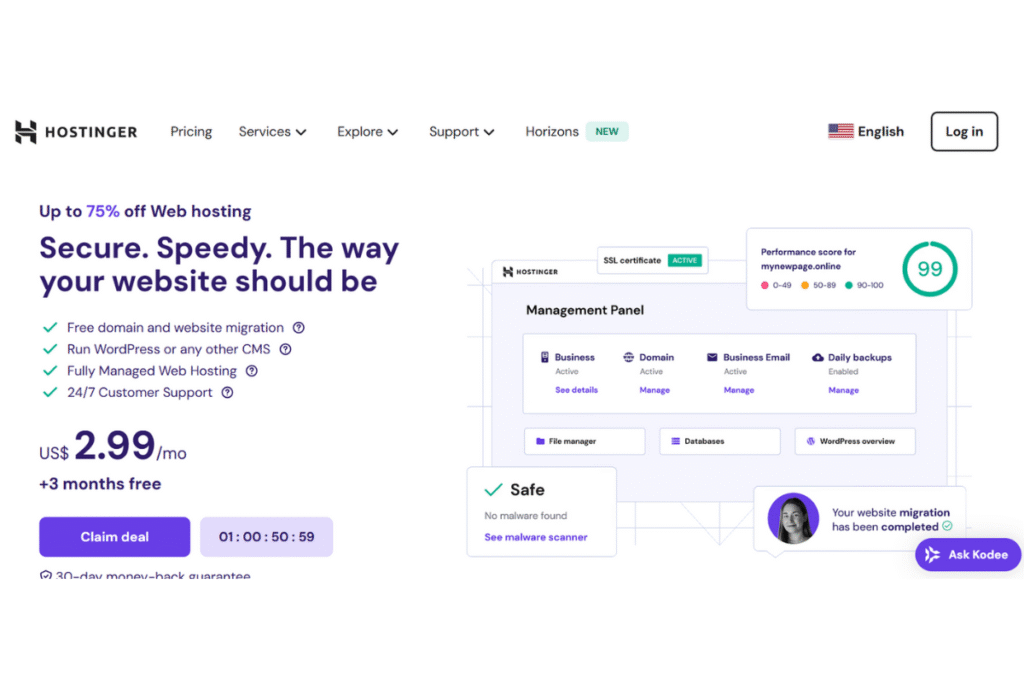Affiliate marketing is one of the most profitable online business models, but success doesn’t happen accidentally. To generate passive income, you need a well-planned strategy that aligns with your niche, audience, and goals. Whether new to affiliate marketing or looking to optimize your efforts, this guide will help you build a profitable affiliate marketing strategy.
Table of Contents
1. Introduction
Affiliate marketing is a performance-based online business model where individuals (affiliates) earn commissions by promoting products or services from other companies. It’s an excellent way to generate passive income as a blogger, YouTuber, or social media influencer.

Why is Affiliate Marketing Important?
Affiliate marketing benefits both brands and marketers:
- Businesses get access to a broader audience without upfront advertising costs.
- Affiliates earn commissions with minimal investment.
- Consumers receive product recommendations from trusted sources.
Benefits of Having a Solid Strategy
Without a plan, affiliate marketing can be frustrating and unprofitable. A solid strategy helps you:
✅ Choose the right niche and products
✅ Create high-quality content that converts
✅ Maximize your earnings through SEO and marketing techniques
2. Understanding the Basics of Affiliate Marketing

Affiliate marketing operates on a revenue-sharing model. When an affiliate promotes a product using a unique tracking link, they receive a commission for each sale, click, or lead generated.
Key Players in Affiliate Marketing
- Merchants – Companies that offer affiliate programs
- Affiliates – Individuals who promote the merchant’s products
- Customers – People who purchase through affiliate links
- Affiliate Networks – Platforms that connect affiliates with merchants
Common Commission Models
💰 Pay-per-sale (PPS): Commission is earned only when a sale is made.
👀 Pay-per-click (PPC): Affiliates earn money based on the number of clicks.
📝 Pay-per-lead (PPL): Commission is based on leads (e.g., email sign-ups).
3. Choosing the Right Niche
Picking the right niche is crucial to your success. A niche is a specific topic or industry you focus on.
Importance of niche selection
- Competition: A highly competitive niche may be difficult to break into.
- Profitability: Some niches have higher commission rates than others.
- Passion & Knowledge: Success is easier when you enjoy the topic.
How to Find a Profitable Niche
🔎 Use Google Trends to see trending topics.
📊 Analyze affiliate program payouts.
📈 Check audience demand with keyword research tools.
Best Tools for Niche Research
- Google Trends
- Ahrefs or SEMrush
- Amazon Best Sellers
- ClickBank Marketplace
4. Finding the Best Affiliate Programs
Not all affiliate programs are created equal. Choosing the right one can significantly impact your earnings.
Types of Affiliate Programs
- High-ticket programs – Offer expensive products with high commissions.
- Recurring commission programs – Earn ongoing revenue from subscriptions.
- Low-ticket, high-volume programs – Lower commission per sale but more frequent purchases.
Criteria for Choosing the Right Program
✔ High commission rates
✔ Reliable tracking and payments
✔ Good reputation and customer support
Popular Affiliate Networks
- Amazon Associates – Ideal for beginners
- ShareASale – Wide range of merchants
- CJ Affiliate (Commission Junction) – Trusted brands and high commissions
- ClickBank – Best for digital products
5. Building a Website or Platform for Affiliate Marketing

A website is often the best platform for affiliate marketing, but social media and video platforms can also be effective. For example, Hostinger has proven to be a suitable platform for affiliate marketers. It features AI capabilities that enable you to generate a website in seconds and create website copy to help you grow.
Why is a Website Important?
- Increases credibility and authority
- Helps with SEO and organic traffic
- Allows full control over content and monetization
How to Create a Website for Affiliate Marketing
1️⃣ Choose a domain name related to your niche.
2️⃣ Set up hosting with a reliable provider (e.g., Hostinger, Bluehost).
3️⃣ Install WordPress and customize your site.
4️⃣ Publish high-quality content and optimize for SEO.
Alternatives to a Website
If you don’t want to build a website, you can use:
📱 Social media platforms (Instagram, TikTok, Facebook)
📹 YouTube for video reviews and tutorials
📧 Email marketing to build relationships and promote products
6. Creating High-Quality Content

Content is the backbone of affiliate marketing. Without engaging and valuable content, it’s difficult to drive traffic and conversions.
The Role of Content in Affiliate Marketing
Content serves as a bridge between potential buyers and the products you promote. It helps to:
- Educate and inform readers about the product.
- Build trust and credibility with your audience.
- Drive organic traffic through SEO and social sharing.
Best Content Types for Affiliate Marketing
To maximize conversions, use different types of content:
- Product Reviews – In-depth analysis of products with pros, cons, and recommendations.
- Comparison Articles – Comparing two or more products to help buyers make a decision.
- How-to Guides – Step-by-step instructions on using a product.
- Listicles – “Top 10” lists showcasing multiple products in a niche.
- Case Studies – Sharing personal experiences and success stories.
How to Write Engaging Affiliate Content
✅ Be honest and transparent – Only promote products you genuinely believe in.
✅ Use persuasive copywriting techniques – Highlight benefits, not just features.
✅ Include high-quality images and videos – Visual content increases engagement.
✅ Add strong calls-to-action (CTAs) – Encourage readers to click your affiliate links.
7. SEO Strategies for Affiliate Marketing

SEO (Search Engine Optimization) is essential for driving free, organic traffic to your website. Effective SEO strategies can help your content rank higher in search engines like Google.
On-Page SEO Techniques
- Keyword Research: Find high-converting keywords using tools like Ahrefs, SEMrush, or Google Keyword Planner.
- Title Optimization: Utilize compelling titles that incorporate primary keywords.
- Meta Descriptions: Craft compelling meta descriptions to boost CTR (click-through rate).
- Internal Linking: Connect related blog posts to improve user experience and site structure.
- Optimized URLs: Keep URLs short and include target keywords.
Off-Page SEO Strategies
- Backlink Building: Get links from high-authority websites.
- Guest Blogging: Write guest posts on niche-related sites.
- Social Signals: Encourage social sharing to boost credibility.
Keyword Research for Affiliate Sites
Finding the right keywords is crucial for ranking and conversions:
🔍 Buyer Intent Keywords – “Best laptop under $1000” (High conversion)
📢 Informational Keywords – “How to choose a laptop” (Drives traffic)
🎯 Long-Tail Keywords – Less competitive, high-intent phrases
8. Leveraging Social Media for Affiliate Success

Image by myriammira on Freepik
Social media is a powerful tool for affiliate marketing, enabling you to reach a broader audience and drive more traffic.
Best Social Media Platforms for Affiliate Marketing
📸 Instagram – Great for product showcases and influencer marketing.
🎥 YouTube – Perfect for product reviews and tutorials.
📌 Pinterest – Ideal for promoting blog posts and guides.
🐦 Twitter (X) – Best for sharing quick affiliate links and updates.
📘 Facebook – Useful for niche groups and community engagement.
How to Promote Affiliate Products on Social Media
- Share personal experiences and testimonials.
- Use engaging images and videos.
- Post consistently and engage with followers.
- Use relevant hashtags to increase visibility.
- Collaborate with influencers to expand reach.
Building an Engaged Audience
💬 Respond to comments and messages.
🎁 Run giveaways and promotions.
📢 Share valuable content, not just affiliate links.
9. Email Marketing for Affiliate Marketers

Email marketing is one of the most effective ways to build long-term relationships and boost affiliate sales.
Why Email Marketing is Important
- Allows direct communication with potential buyers.
- Builds trust and authority in your niche.
- It helps promote multiple affiliate products over time.
How to Build an Email List
📨 Offer a freebie (eBook, checklist, mini-course).
📩 Use lead magnets and pop-ups.
📧 Encourage subscriptions through blog posts and social media.
Best Email Marketing Strategies
💡 Personalization: Use the subscriber’s name and tailor content to their interests.
🛍️ Exclusive Offers: Share special discounts and promotions.
📅 Regular Newsletters: Provide value before promoting products.
📈 Automated Sequences: Set up a series of emails to nurture leads over time.
10. Paid Advertising Strategies
For faster results, consider using paid advertising to drive traffic and boost conversions.
Google Ads for Affiliate Marketing
- Search ads targeting high-intent keywords.
- Optimize landing pages for conversions.
- Monitor ROI to ensure profitability.
Facebook and Instagram Ads
- Target the right audience based on demographics and interests.
- Use eye-catching visuals and compelling copy.
- Split-test different ad creatives for better performance.
Influencer Collaborations
- Partner with influencers to expand your reach to a broader audience.
- Offer unique discount codes for tracking performance.
- Select influencers whose target audience aligns with your niche.
11. Tracking and Analyzing Performance

To maximize your earnings, track and analyze your affiliate marketing efforts.
Importance of Tracking Affiliate Links
Tracking helps you:
✔ Identify high-performing products.
✔ Optimize your marketing strategies.
✔ Avoid wasted effort on low-performing promotions.
Best Tools for Monitoring Affiliate Sales
📊 Google Analytics – Tracks website traffic and conversions.
🔗 Pretty Links – Shortens and tracks affiliate links.
📈 SEMrush / Ahrefs – Analyzes SEO performance and traffic sources.
How to Optimize Performance
- Identify top-performing content and replicate its success.
- Test different call-to-actions and affiliate links.
- Focus on the highest-converting traffic sources.
12. Scaling Your Affiliate Marketing Business
Once you start earning consistently, it’s time to scale.
When to Scale Your Affiliate Efforts
📈 When you’re making steady commissions.
🚀 When you have a loyal audience.
💰 When you want to increase passive income.
Strategies for Expansion
- Diversify traffic sources (including SEO, social media, and paid ads).
- Expand into new niches or related products.
- Outsource content creation and SEO tasks.
Common Mistakes to Avoid
❌ Promoting too many products without a focus.
❌ Ignoring SEO and organic traffic.
❌ Using spammy tactics that violate affiliate policies.
13. Legal and Ethical Considerations
Affiliate marketing requires transparency and adherence to established guidelines.
FTC Guidelines for Affiliate Marketers
- Disclose affiliate relationships in blog posts and videos.
- Avoid making false claims about products.
- Use proper disclaimers to maintain trust.
Importance of Transparency
Being honest with your audience builds credibility and long-term success.
14. Common Challenges in Affiliate Marketing and How to Overcome Them
Low Conversions
- Optimize your website for better UX.
- Improve call-to-actions and persuasive copy.
High Competition
- Focus on less competitive, high-converting keywords.
- Build strong brand authority.
Algorithm Changes
- Diversify traffic sources to reduce dependency on a single platform.
- Keep up with SEO best practices.
15. Conclusion and Final Thoughts
Affiliate marketing is an excellent way to generate passive income, but success requires planning, effort, and persistence. You can build a profitable affiliate marketing business by selecting the right niche, creating high-quality content, optimizing for SEO, and monitoring your performance.
Start small, stay consistent, and scale your efforts over time!
FAQs
1️⃣ How long does it take to make money with affiliate marketing?
It depends on your niche, strategy, and traffic sources. Some earn within months, while others take a year or more.
2️⃣ Do I need a website to start affiliate marketing?
No, but having a website increases credibility and long-term success.
3️⃣ Is affiliate marketing passive income?
Yes, but it requires an initial active effort before becoming passive.
4️⃣ Can I do affiliate marketing without money?
Yes, by leveraging free traffic sources like SEO and social media.
5️⃣ What’s the best affiliate program for beginners?
Amazon Associates is beginner-friendly, but high-ticket programs offer better commissions.
This post contains affiliate links, and I may receive a commission when a product or service is purchased via the links at no cost to you. Thank you.
